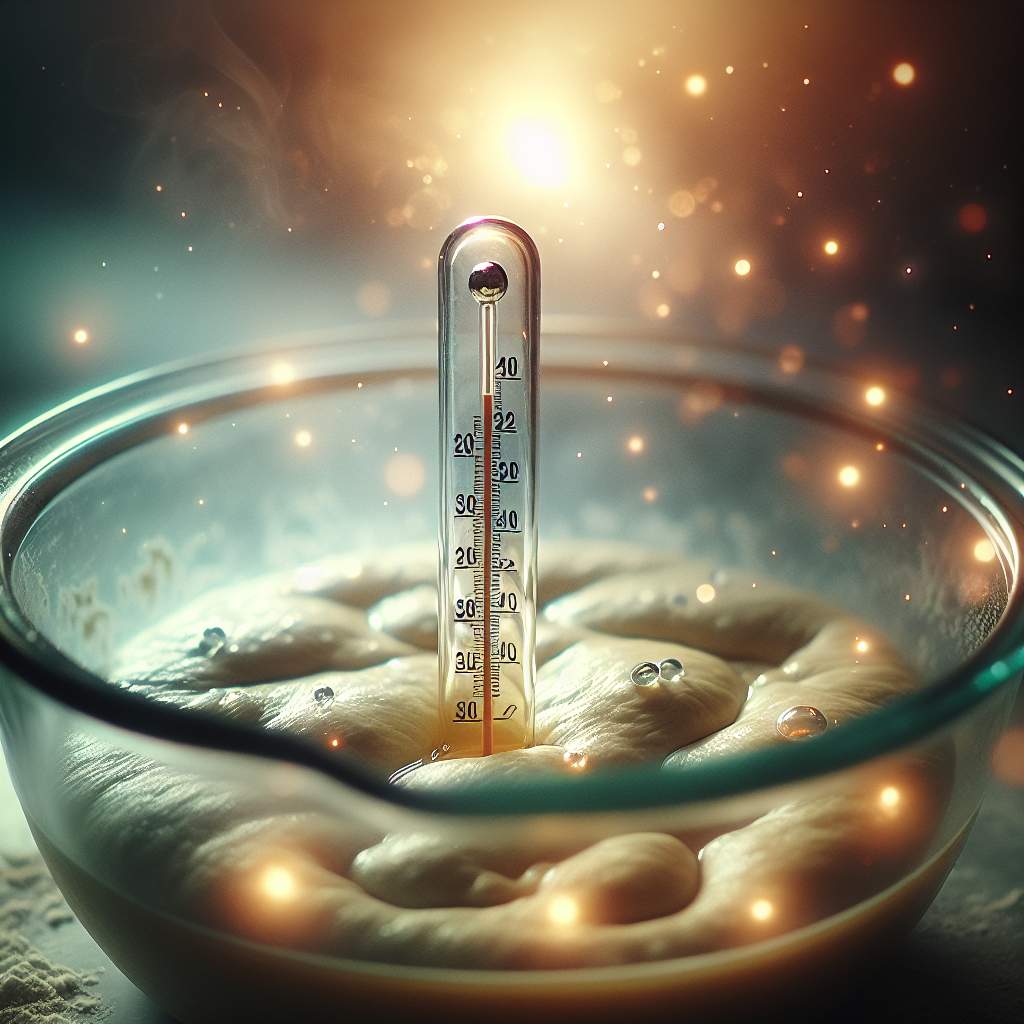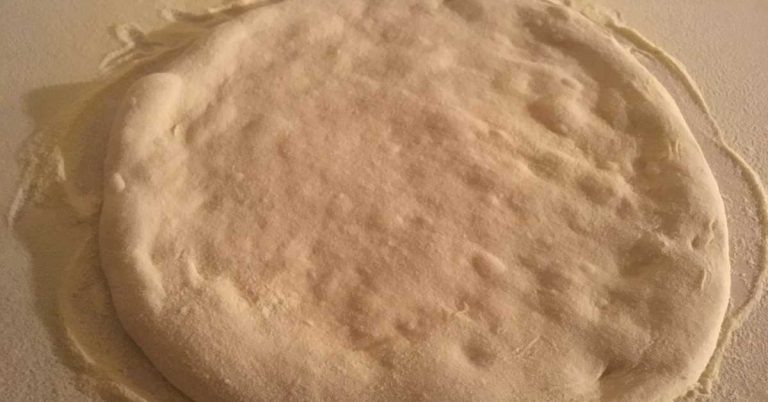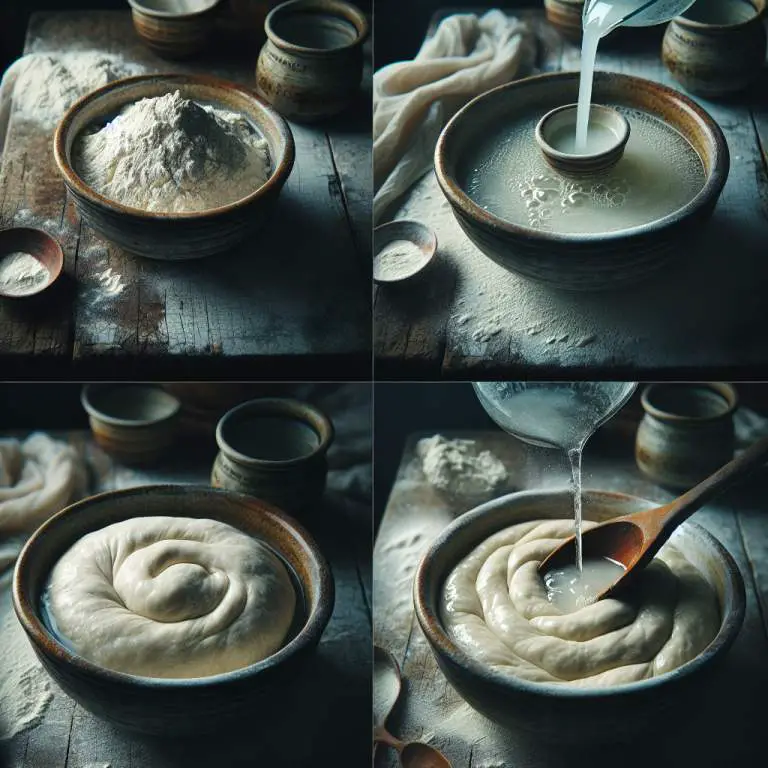How Does Temperature Influence Poolish Pizza Dough Fermentation?
Temperature plays a vital role in poolish dough fermentation, affecting the rate at which the yeast activates and the dough rises. Warmer temperatures speed up fermentation, leading to a quicker rise but less flavor development. Conversely, cooler temperatures slow down the process, allowing for more complex flavors to emerge in the dough.
When making pizza, the temperature plays a big role in how the dough turns out. This is especially true when using a special kind of dough preparation called “poolish.” Let’s dive into why temperature is so important and how it affects the dough used in pizzas.

Understanding Poolish Pizza Dough
First off, what is poolish? Poolish is a type of pre-fermentation used in baking that’s quite wet, made with equal parts flour and water by weight, and a small amount of yeast. This mixture sits and ferments for several hours or even days before being added to the final dough mix. Using poolish in pizza dough has many benefits. It can make the dough more flavorful, give it a better texture, and even make it easier to shape into that perfect pizza base.
Basics of Fermentation
Fermentation is a process where yeast eats up sugars in the flour and releases gas. This gas is what makes the dough rise and gives baked goods like pizza a light and airy texture. Yeast is a tiny organism that’s super important in baking, especially when making dough. It’s what makes the dough grow bigger and become fluffy.
Temperature’s Role in Fermentation
Temperature has a big job in how well yeast works during fermentation. If it’s too cold or too hot, the yeast won’t do its job right. For poolish, the best temperature range is between 70°F and 75°F (21°C to 24°C). This is the sweet spot where yeast is most active, helping the poolish ferment just right.
Effects of Low Temperature on Poolish Fermentation
When the temperature is too low, the fermentation process slows down a lot. This isn’t always a bad thing, though. A slower fermentation can lead to more complex flavors in the dough, which might make your pizza taste even better. However, it also means the dough’s texture can change. It might become denser than you’d like, which affects how the pizza feels when you bite into it.
So, keeping an eye on the temperature is key when making poolish for pizza dough. It can mean the difference between a good pizza and a great one. Remember, the goal is to create a dough that’s delicious, has the right texture, and cooks perfectly. And temperature control is a big part of making that happen.
| Temperature (°C) | Fermentation Rate | Notes |
|---|---|---|
| 4 | Very Slow | Suitable for long, cold fermentation. Enhances flavor complexity. |
| 10 | Slow | Ideal for overnight fermentation. Balances flavor and texture. |
| 21-24 | Moderate | Standard room temperature fermentation. Good for same-day baking. |
| 27-32 | Fast | Ideal for quick dough development. Watch for over-fermentation. |
| >35 | Very Fast/Inhibited | Risk of yeast death and off-flavors. Not recommended. |
Effects of High Temperature on Poolish Fermentation
When the temperature gets too high during poolish fermentation, the process speeds up. This might sound good because it means your dough is ready faster. However, there are some risks. If the dough ferments too quickly, it can over-ferment. This means the yeast eats up all the sugar too fast, and your dough might not taste good. It can also make the dough’s structure weak, leading to a pizza that doesn’t have the right texture or flavor.
Finding the Optimal Fermentation Temperature
Finding the right balance between how fast your dough ferments and the quality of the dough is key. You want your dough to ferment at a speed that’s just right. This means not too fast and not too slow. To do this, you need to keep the dough at the best temperature. Some tips for controlling the temperature include using a cooler or warmer spot in your kitchen or adjusting the amount of yeast. The goal is to get a dough that tastes great and has the perfect texture.
Adjusting Fermentation Time Based on Temperature
Depending on how warm or cool it is, you might need to change how long you let your dough ferment. If it’s warmer, your dough might be ready sooner. If it’s cooler, it might take longer. It’s important to keep an eye on your dough to see how it’s doing. You’re looking for it to double in size and have a good flavor and texture. By watching your dough and knowing how the temperature affects it, you can make sure it turns out just right.
Final Thoughts
Temperature plays a big role in making poolish pizza dough. If it’s too hot, the dough can ferment too quickly, which isn’t good. But finding the perfect temperature can help you make a dough that’s just right. It’s all about balancing the speed of fermentation with the quality of the dough. By controlling the temperature and adjusting the fermentation time as needed, you can make a pizza dough that tastes amazing and has the perfect texture. Remember, making great dough takes practice, so keep trying until you find what works best for you.






